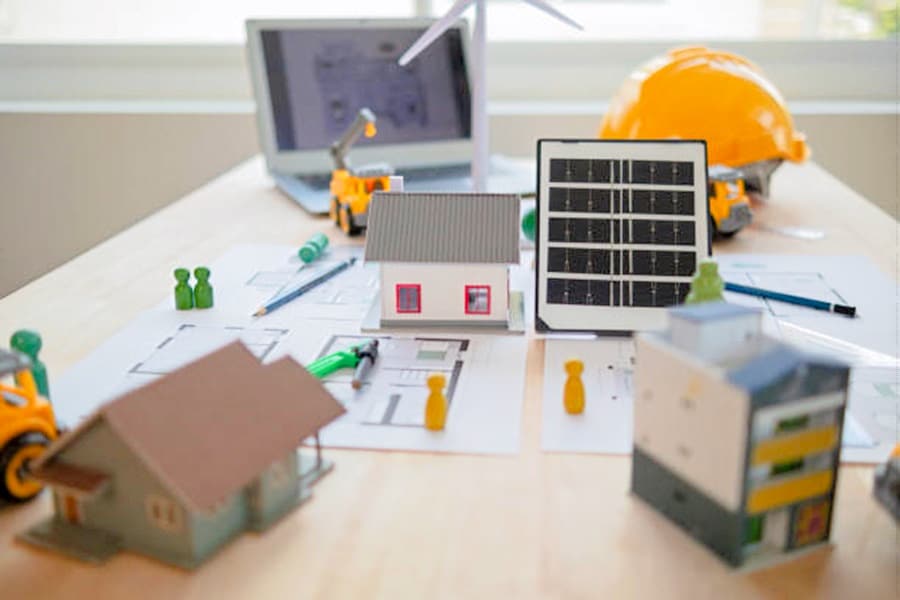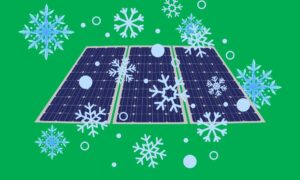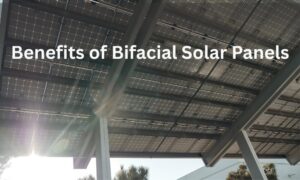With abundant sunshine, Australia is a prime location for harnessing solar energy. While traditional solar panels have become popular for homeowners, they may not be suitable for everyone. Perhaps your roof space is limited, you’re concerned about aesthetics, or you’re simply looking for a more cutting-edge solution.
So, what are traditional solar panels? Traditional solar panels, also known as black and blue panels, are the most common type of solar technology used in Australian homes. These photovoltaic (PV) panels capture sunlight and convert it into electricity, offering a clean and sustainable way to reduce your reliance on the grid and potentially lower your electricity bills.
Made from silicon cells encased in a protective frame, traditional panels come in various sizes and wattages, allowing homeowners to customise their system based on their energy needs and roof space.
Use our easy-to-use solar power and battery storage calculator to determine the size of your solar system with storage or even an EV charger! Our solar calculator will generate performance information and potential savings.
We can send this information to 3 trusted local installers in your area to receive obligation-free solar quotes.
Find out how much you can expect to pay for solar
Ready to find out more? Get FREE quotes for solar, batteries + more
*Prices quoted are to be used as a guide only and do not factor in state and other rebates and incentives. Includes STC discount.
Fortunately, the world of solar energy is constantly evolving, offering a variety of innovative alternatives to traditional solar panels. These alternatives come with their own advantages and disadvantages, making it crucial to understand your specific needs and preferences before making a decision.
1. Wind turbines
Microwind turbines can be an alternative to consider for homes with sufficient land and consistent wind patterns. These smaller-scale turbines generate electricity from wind power, offering a localised renewable energy solution. Wind turbines offer unique advantages, particularly for those in windy regions with large plots of land.
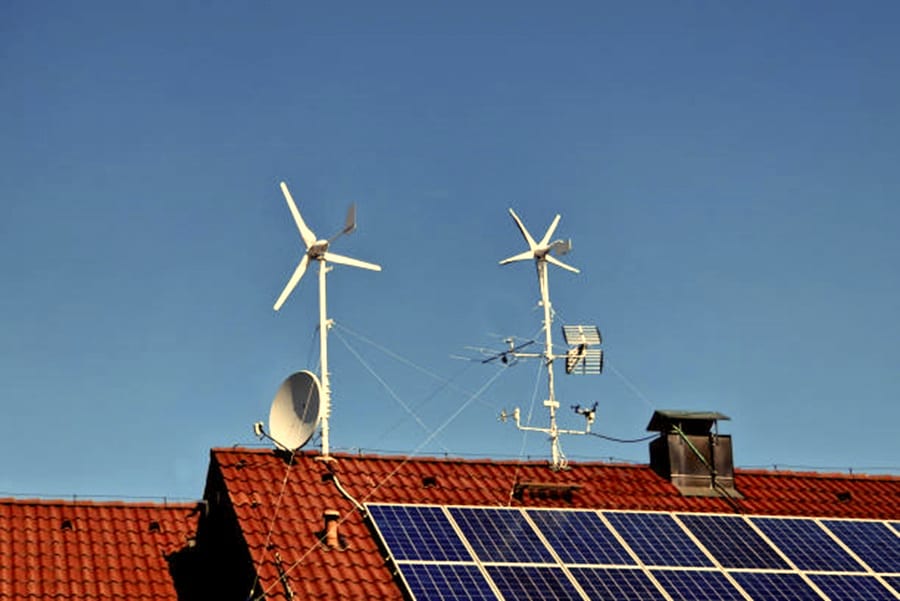
Benefits of wind turbines | Things to consider |
Potentially higher energy output: In areas with consistent wind speeds, wind turbines can generate more electricity than rooftop solar panels, especially during low-light conditions. | Initial cost: Wind turbines generally have a higher upfront cost compared to solar panels. |
Land optimisation: They can be mounted on rooftops or poles, utilising unused space and potentially complementing existing solar setups. | Suitability: Consistent wind speeds are crucial for optimal performance. Analysing wind data in your location is essential. |
Complementary power source: Combining wind and solar systems can create a more resilient and reliable energy source, as they generate power under different weather conditions. | Regulations and permits: Installation may require permits and approval depending on local regulations and zoning restrictions. |
Power your home with the sunshine above and the wind at your back! Ditch the grid or off-grid and embrace clean energy independence with a customised solar + wind + battery storage system.
Energy Matters connects you with 3 FREE solar quotes from local, vetted installers, ensuring you get the perfect fit and the best price. Click today and unlock the future of energy!
2. Building Integrated Photovoltaics (BIPV)
BIPV integrates solar panels into the building envelope, transforming your roof, walls, or facades into electricity generators. This not only provides clean energy but also enhances the aesthetics of your home. BIPV materials come in various forms, including solar tiles, slates, shingles, and even glass panels.
Benefits of BIPV | Things to consider |
Aesthetics: BIPV offers a sleeker, more integrated look compared to traditional solar panels mounted on the roof. | Cost: BIPV systems can be more expensive than traditional solar panels due to the additional integration involved. |
Durability: BIPV systems are often more durable than traditional panels as they become part of the building envelope. | Design limitations: The design flexibility of BIPV might be restricted by the building’s architecture. |
Space efficiency: BIPV utilises existing building surfaces, eliminating the need for additional mounting structures. | Installation complexity: BIPV installation requires specialised expertise, potentially impacting costs and timelines. |
3. Solar roof tiles/solar shingles
Solar roof tiles are also known as solar shingles. They are an aesthetically appealing alternative to traditional solar panels. These thin, lightweight tiles are designed to mimic the look of traditional concrete or clay tiles while incorporating photovoltaic cells for generating electricity.
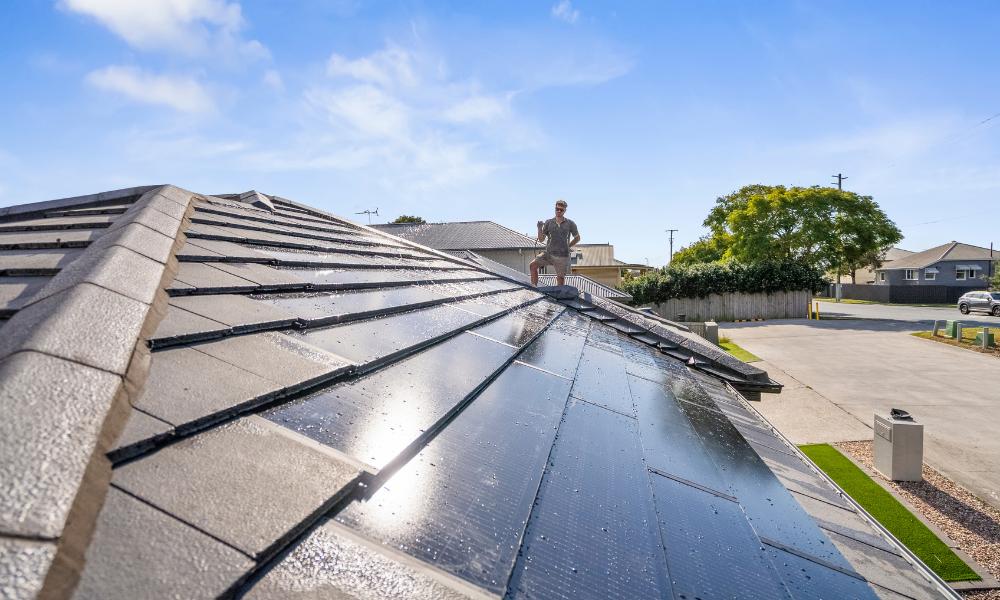
Source: GoodWe’s BIPV Solar Tile
Benefits of solar roof tiles | Things to consider |
Aesthetics: Solar roof tiles offer a traditional look while incorporating solar functionality. | Limited availability: Solar roof tile styles and colours might be limited compared to traditional roofing options. |
Durability: Solar roof tiles are designed to be as durable as conventional roof tiles. | Lower efficiency: Solar roof tiles generally have lower efficiency compared to traditional solar panels. |
Potential cost savings: Compared to solar shingles, solar roof tiles might be a more cost-effective option. | Installation complexity: Installing solar roof tiles might require specialised expertise, potentially impacting costs. |
4. Transparent solar cells
Imagine windows that not only allow light but also generate electricity. That’s the potential of transparent solar cells. These innovative cells can be integrated into windows, skylights, or building facades, creating a semi-transparent layer that harvests solar energy.
Transparent solar cells hold immense potential for integrating solar technology into windows, facades, and other building elements. These cells allow light to pass through while generating electricity, opening up exciting possibilities for sustainable building design.
Benefits | Things to consider |
Aesthetics: Transparent solar cells can enhance the aesthetics of buildings while generating clean energy. | Current limitations: Transparent solar cells are still under development and may have lower efficiency compared to traditional solar panels. |
Versatility: They can be integrated into various building elements, offering greater design flexibility. | Cost: The cost of transparent solar cells is currently high, limiting their widespread adoption. |
Potential for innovation: Transparent solar cell technology is rapidly evolving, offering promising prospects for future advancements. | Technical challenges: Integrating transparent solar cells into buildings requires careful engineering considerations. |
5. Community solar
Not everyone has suitable roof space or the upfront capital for installation. Community solar emerges as a compelling alternative, allowing households to reap the benefits of solar without the individual installation hassles.
This approach involves subscribing to a share of a large-scale solar farm and receiving clean energy credits deducted from your electricity bill. It eliminates the need for individual installations, making solar accessible to renters, apartment dwellers, and those with unsuitable rooftops.
Read more about:
Benefits | Things to consider |
Affordability: Eliminate the upfront costs of purchasing and installing individual panels. | Energy production: Your share of the solar farm’s output may not always meet your energy needs. |
Accessibility: Ideal for renters, those with unsuitable rooftops, or individuals with budget constraints. | Location: The distance between your home and the solar farm can impact energy efficiency. |
Reduced maintenance: The solar farm operator handles maintenance and repairs, freeing you from these concerns. | Contract terms: Carefully review contract details regarding subscription fees, duration, and potential cancellation clauses. |
Environmental impact: Contribute to a collective effort towards a cleaner, more sustainable future. |
Choosing the right alternative
The best alternative to solar panels for your home depends on various factors, including your budget, energy needs, roof suitability, and local regulations. Carefully evaluate each option, considering efficiency, cost, aesthetics, and maintenance requirements.
Consulting with a renewable energy expert can help you make an informed decision and choose the most suitable option for your unique situation.
By exploring these innovative alternatives, Australian homeowners can embrace the power of renewable energy and contribute to a sustainable future, even if traditional solar panels aren’t the perfect fit. Remember, with continuous advancements in technology, even more exciting solar panel alternatives are likely to emerge in the years to come.
Ready to upgrade your solar systems and take your energy savings to the next level?
Embrace the energy efficiency revolution by upgrading your solar systems and adding a battery or solar inverters with Energy Matters.
Energy Matters recommends cost-effective solar batteries such as GoodWe, Enphase, sonnen, Fronius, Fimer, Sungrow, Tesla and LAVO.
With our 3 free solar quotes, you can compare plans from pre-qualified and vetted installers in your area and find the perfect solution for your home and business. Harness the sun’s power and save money on electricity bills while reducing environmental impact. Let Energy Matters guide you towards a brighter, more sustainable future.









